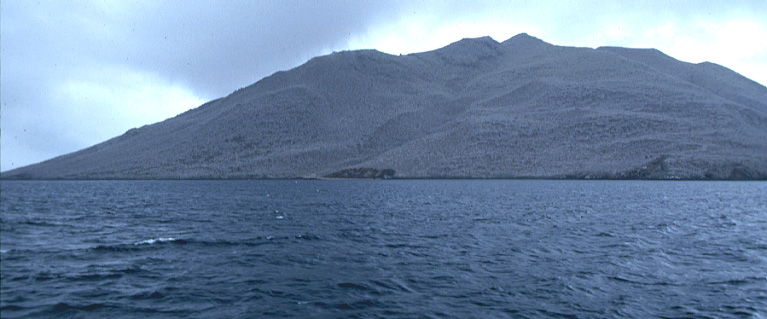|
Description of the Galapagos Islands Isla Rabida  | | Picture source: http://www.geo.cornell.edu/geology/GalapagosWWW/GalapagosGeology.html |
Rabida, also known as Jervis Island, is one of two small islands locate to the south of Santiago. Though small, it contains a great variety of rock and lava types, including basalt, ferrobasalt, icelandite, and trachyte. Also to be found are a range of gabbroic xenoliths. The range of lava compositions is a result of fractional crystallization. As magma cools, crystals form and settle out. As a result, the composition of the magma changes, generally becoming richer in silica and poorer in magnesium. The xenoliths are fragment of magma that crystallized and depth and where broken off and carried to the surface during an eruption. It is interesting that these differentiated rocks (i.e., products of extensive fractional crystallization) are restricted to the central portion of the Galapagos archipelago, occurring on Alcedo, Pinzon, and Rabida.
Rabida is essentially a cluster of of steep-sided, coalescing domes, flows, and pyroclastic cones. An irregular depression in the center may be a crater, but it has no caldera. The oldest rocks on Rabida are about 1 million years. Some of the pyroclastic cones on the north coast are probably much younger however, as then erode quite rapidly. A salt pond formed between these cones is one of the many places where one can see flamingos in the Galapagos. These spectacular birds feed exclusively on the brine shrimp found in these saline ponds. Interestingly, their distinctive pink color comes from the shrimp themselves. Young flamingos are white and only acquire the pink color after they begin to feed on the shrimp.
|







